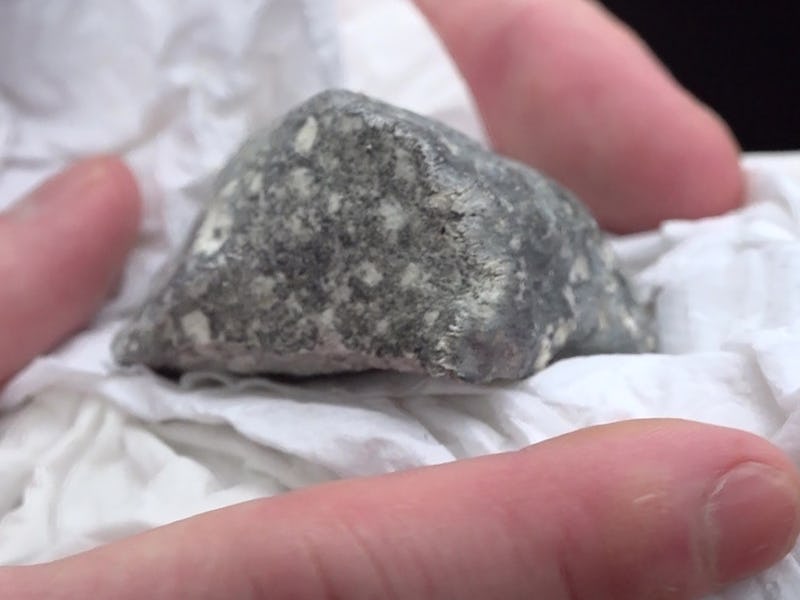Rare Meteorites That Could Be Long Lost Chunks of Mercury Just Fell To Earth
The meteorites are an extremely rare type of space rock called aubrites.

A handful of meteorites crash-landed outside Berlin in late January and, after further inspection, turned out to be one of the rarest types of space rock ever recovered on Earth.
Last month, a three-foot-wide asteroid plummeted to its fiery doom in Earth’s atmosphere. Astronomer Krisztián Sárneczky of Konkoly Observatory in Hungary spotted the small asteroid, formally called 2024 BX1, only a matter of hours before it collided with Earth’s upper atmosphere. The next few hours were a frenzy of activity, with astronomers from NASA, the ESA, and several universities working together to track the meteor’s trajectory through the sky.
High above the ground, 2024 BX1 broke apart in a bright fireball, and astronomers at the Czech Academy of Sciences calculated where the pieces would fall (south of the German village of Ribbeck, outside Berlin) based on the weather, particularly strong winds. SETI Insitute meteor astronomer Peter Jenniskens and a team of staff and students from several universities combed the fields around Ribbeck for meteorites: fragments of the asteroid that had survived the heat and friction of falling through Earth’s atmosphere.
Aubrites formed from cooling magma, although it’s not clear if they originally formed as part of a large asteroid or a newborn planet.
Recent testing at the Museum of Natural History in Berlin showed that the meteorites are an extremely rare type of space rock called aubrites.
Aubrites make up only about 1 in 10,000 recovered meteorites. They look like gray granite with a thin crust of translucent glass, and they’re made of magnesium silicate minerals with almost no iron mixed in, which is highly unusual for a meteorite. Their big, chunky crystals are evidence that aubrites formed from cooling magma.
Aubrites probably formed as part of an asteroid, only to end up broken off by impacts with other drifting space rocks; 3103 Eger is the leading candidate. Some astronomers, however, have suggested that aubrites may actually be long-lost chunks of the planet Mercury.